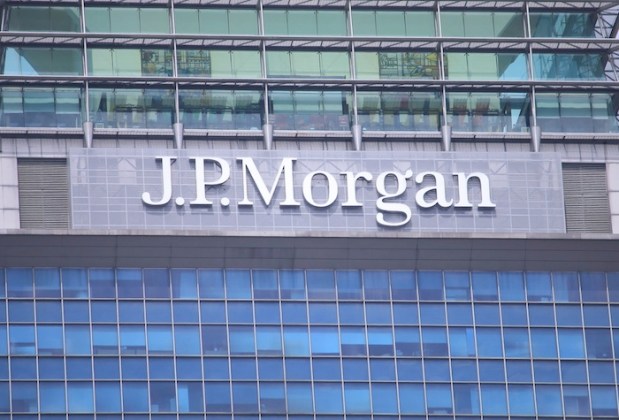Should Chase Be Broken Up? Goldman Sachs Thinks So

According to a research analyst at Goldman Sachs, JPMorgan Chase just isn’t living up to its full potential. This is despite holding over $2.5 trillion in assets at the end of the third quarter of 2014, making it the nation’s largest bank. Goldman’s lead banking analyst Richard Ramsden thinks that Chase could be shooting higher – by breaking itself into four parts.
The biggest of the pieces would include the bank’s branch network, which Goldman values at about $100 billion on its own. The second largest piece (and almost identical in size to the branch network) would be JPMorgan’s investment bank. The plan also calls for the commercial bank and an asset management company to be spun out on their own. Goldman Sachs estimates that such a division would raise Chase’s value by 25 percent and that the boost in returns would far out weigh the synergies that JPMorgan claims it gets from its current size.
“Our analysis indicates that even accounting for lost synergies, a JPM breakup would be accretive to shareholders in most scenarios,” Ramsden wrote in the report.
An alternate line of reasoning would essentially divide JP Morgan Chase into two banks – an investment bank and a traditional bank – which Goldman holds would also increase the overall value of the current bank, albeit by a less staggering sixteen percent. Such a division would roughly return the bank to what was permitted before Glass Steagall Act was repleaed in the early 2000s.
“Too big to fail” has been a standard mantra amongst banking critics since the financial crisis of 2008 when a bunch of too big to fail banks failed. Epically. Shrinking the banks has since been the interest of various regulators and banking critics. However, the new report is the first call for a bank break-up from Goldman Sachs and is predicated on potential changes coming to capital requirements for big banks proposed by the Federal Reserve in early December.
Under the proposed changes, JPMorgan, because of its size, would be required to have enough capital to cover 11.5 percent of its riskiest assets. That could be as much as 2 percentage points more than what Bank of America, Wells Fargo, Citigroup, or even Goldman Sachs would have to hold.
JPMC declined to comment on Goldman’s math, but in the past has noted that it brings in more than $15 billion in revenue because it is able to cross-sell its services among its divisions. Ramsden considers that argument in his report but concludes that those cross-divisional synergies are more illusory than decisive since as many as half of JPMorgan’s “disclosed revenue synergies” are within the investment bank or the commercial bank, and not really across divisions.
Goldman’s analysis overlooks operation risks associated with a large scale corporate break-up. Estimates of what companies would be hypothetically worth if they were divided often yield higher figures than what a company currently trades for in the real market, which is not in itself an argument to break them up.
For example, Goldman Sachs, as the nation’s fifth largest bank, will also be hit hard by the Fed’s proposed capital requirements. The back-of-the-envelope math as done by Fortune magazine using Ramsden’s method would seem to indicate that it is also time to break up Goldman Sachs.
“Break up Goldman into three divisions: investment banking, private equity, and asset management. Do that, and, based on my back-of-the-envelope math, and using Ramsden’s model, Goldman would be worth at least $100 billion, or nearly 18% more than what its shares are trading at today. And that’s before any benefit Goldman gets from the fact that its divisions would be smaller and therefore required to hold less capital by the Fed. It’s time to break up Goldman Sachs!”
